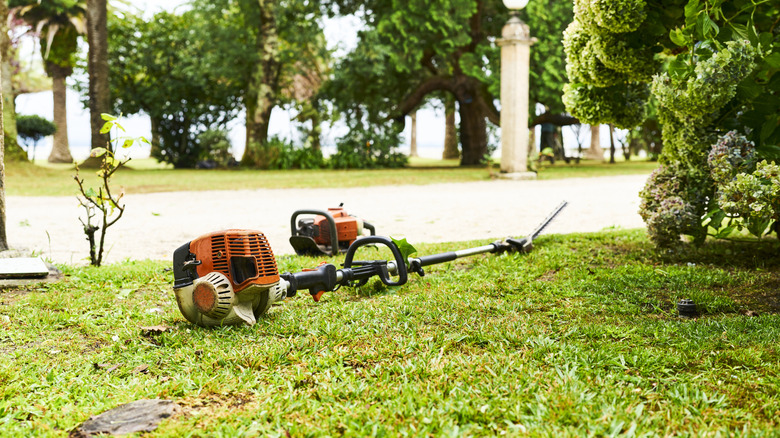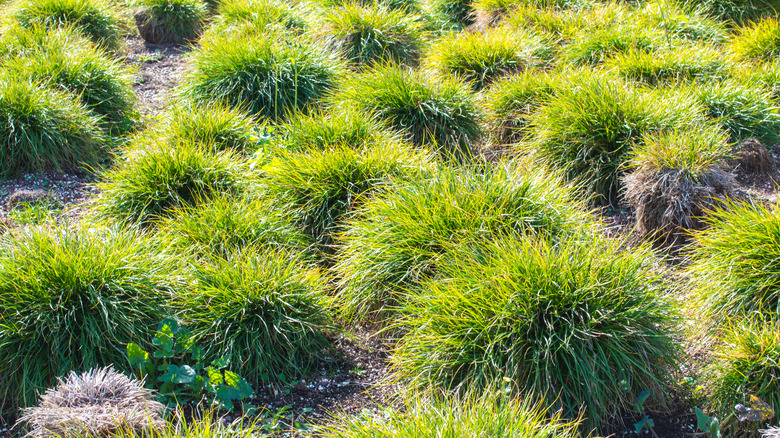This Is The Perfect Ground Cover To Choke Out Unwanted Weeds
Ground covers control erosion, choke out weeds, reduce runoff, and benefit wildlife and pollinators. They can be used as a low-maintenance alternative to a lawn, as a border for a water feature, in a rock garden, or in places where grass can't grow. If you need a ground cover that thrives in a shady area, then tough, easy to grow blue wood sedge (Carex flaccosperma) is an ideal choice for your landscape. Once it's established, the hardy plant spreads by rhizome, out-competing weeds and suppressing the growth of unwanted plants by shading the soil and blocking the light.
Blue wood sedge (hardy in USDA zones 5 to 8), sprouts modest green and white flowers in the spring, but the foliage is the star of this ground cover. Individual plants have grass-like leaves that age from green to blue-green after the flowers are spent. The pest-free plants grow in clumps up to a foot wide and a foot tall, and since they're evergreens, they're attractive year-round.
Beware, not all sedges make good ground covers to naturally avoid weeds in your lawn. Don't confuse sedges from the genus Carex with those of Cyperus, sometimes called nutsedges or nutgrass. Cyperus species are aggressive weeds that are hard to eradicate.
Growing blue wood sedge
Blue wood sedge tolerates full shade, but it does better with some sun during the day. Too much sun may cause the leaves to burn. The soil should be moist and slightly acidic. If you're unsure of the pH of your soil, send a sample to your local extension office or measure the pH with a home test kit. Enrich the soil by working organic matter into the top six inches, and plant blue wood sedge seedlings with the crown (the area between the roots and the stems) at surface level. Water thoroughly and keep the new plants moist until they're established, which can take around three months. Once they're established, water the plants deeply when the top two inches of soil dry out, and use an organic slow-release fertilizer in the spring.
While fall is the best time to plant sedges, they can also be planted in the spring. In smaller spots like a rock garden or along a stream, set seedlings in holes that are a few inches wider than the seedling's root ball. For mass plantings intended to cover large areas (like a lawn), dig trenches for the plants. They will benefit from a thin layer of mulch, but won't require additional mulching as they mature. Blue wood sedge can be divided into halves or quarters to produce new plants. Mowing or pruning aren't necessary, though they may give the plants a tidier appearance.

